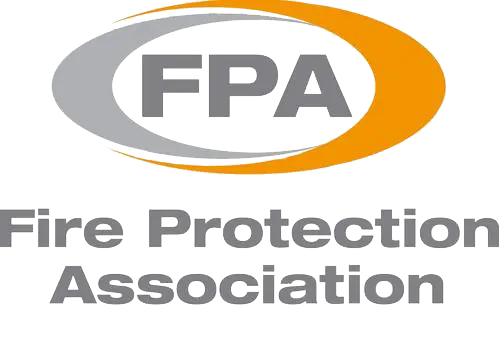At ESI: Electrical Safety Inspections, we deliver comprehensive fire safety services to businesses across City of Westminster. Whether you manage an office, warehouse, retail premises, care home, school, or industrial site, we help you stay compliant, protect staff and customers, and safeguard your property.
With over 20 years of experience, we understand the legal and practical challenges businesses face when it comes to fire safety. Our qualified engineers and fire safety specialists provide expert advice, inspections, testing, and maintenance in line with UK regulations and British Standards.
Book Your Fire Safety Assessment Today – Protect your business and meet your legal obligations. Call us now on 01276 300 351 to schedule your visit.
Fire Safety Compliance and Best Practice
City of Westminster businesses are legally required under the Regulatory Reform (Fire Safety) Order 2005 to maintain a safe environment and ensure that all fire safety systems and equipment are properly installed, maintained, and tested.
Our services are delivered in compliance with key standards, including:
-
BS 5839 – Fire detection and alarm systems
-
BS 5306-3 & BS 5306-8 – Fire extinguisher servicing and selection
-
BS 5266 – Emergency lighting installation and testing
-
BS 9990 – Dry riser testing and maintenance
-
BS 9991 & BS 9999 – Fire safety in residential and commercial buildings
Get Expert Fire Protection Advice – Speak to our qualified team about fire safety compliance and protecting your premises – Call today on 01276 300 351.
Our Fire compliance services in City of Westminster
🔥 Fire Risk Assessments – Identifying hazards, evaluating risks, and providing practical recommendations to meet legal obligations under the Fire Safety Order.
🔥 Fire Alarm Servicing & Maintenance – Testing and maintenance of fire detection systems in line with BS 5839, helping ensure early warning in the event of fire.
🔥 Fire Extinguisher Supply & Servicing – Supplying, commissioning, maintaining, and testing portable extinguishers in accordance with BS 5306-3, ensuring equipment is ready to use when needed.
🔥 Emergency Lighting Testing & Maintenance – Inspection and testing to BS 5266 standards, ensuring emergency lighting works correctly to guide occupants to safety.
🔥 Dry Riser Inspection & Testing – Six-monthly visual inspections and annual pressure testing in compliance with BS 9990, keeping vital fire-fighting infrastructure ready for use.
🔥 Fire Safety Training – Practical staff training on fire prevention, extinguisher use, and evacuation procedures.
🔥 Fire Door Inspections – Checking condition, fit, and compliance of fire doors to ensure they provide effective compartmentation and protection.
Why Choose ESI in City of Westminster
-
Qualified engineers and fire safety specialists serving City of Westminster
-
In-depth knowledge of commercial and industrial fire safety compliance
-
Clear, actionable reports and certification
-
Flexible scheduling to minimise disruption
-
Supporting businesses across City of Westminster and surrounding areas
Stay Compliant and Safe – Contact us on 01276 300 351 for a free quote on fire alarm servicing, extinguisher maintenance, and risk assessments.
Frequently Asked Questions
Q: How often should fire alarms be serviced?
A: Fire alarms should be tested regularly, with a minimum of two service visits per year for most systems, as recommended in BS 5839.
Q: What training do my staff need?
A: Under the Fire Safety Order, you are required to provide adequate fire safety training to all staff. We offer practical courses tailored to your premises and risk profile.
Q: Do you provide fire extinguisher servicing?
A: Yes – we supply, commission, and maintain fire extinguishers in line with BS 5306-3, ensuring you have the correct type and coverage for your business.
Fire Safety Services in City of Westminster
The City of Westminster is a London borough with city status in Greater London, England. It is the site of the United Kingdom’s Houses of Parliament and much of the British government. It contains a large part of central London, including most of the West End, such as the major shopping areas around Oxford Street, Regent Street, Piccadilly and Bond Street, and the entertainment district of Soho. Many London landmarks are within the borough, including Buckingham Palace, Westminster Abbey, Whitehall, Westminster Cathedral, 10 Downing Street, and Trafalgar Square.
The borough also has a number of major parks and open spaces, including Hyde Park, and most of Regent’s Park. Away from central London the borough also includes various inner suburbs, including St John’s Wood, Maida Vale, Bayswater, Belgravia and Pimlico. The borough had a population of 204,300 at the 2021 census.
The original settlement of Westminster was historically a separate urban area to the west of London, growing up around the minster church of Westminster Abbey. Westminster was an important centre of royal authority from Saxon times, and was declared a city in 1540. It was gradually absorbed into the urban area of London, but London’s official city boundaries remained unchanged, covering just the area called the City of London, broadly corresponding to the medieval walled city. From the 19th century some metropolis-wide administrative bodies were introduced. The County of London was created in 1889, replaced in 1965 by the larger administrative area of Greater London, which since 2000 has been led by the Mayor of London. The cities of London and Westminster retain their separate city statuses despite having long been part of the same urban area.
The modern borough was created in 1965 as part of the same reforms which created Greater London, covering the area of the three former metropolitan boroughs of Westminster, Paddington and St Marylebone. The local authority is Westminster City Council. To the east, Westminster borders the City of London, with the boundary marked by Temple Bar. Other neighbouring boroughs (anti-clockwise from north-east) are Camden, Brent, Kensington and Chelsea, Wandsworth and Lambeth, the latter two being separated from Westminster by the River Thames. Charing Cross in Westminster is the notional centre of London, being the point from which distances from London are measured.









